
The Science Gallery, Lightwave 2009, EOI

Alan Rorie, Ben Capernter, Jo Slota and David Shulman
The Vision:
Interactive art communicates the scientific intuitions that enable people to understand scientific facts. The Neuron Chamber intuitively communicates the form and function of brain cells called neurons. When active, neurons create our rich mental world by generating electrical impulses, called action potentials, which travel their length. The Neuron Chamber is a mysterious observation tank that invites participants to activate three organic neuron sculptures, each responding with visible electrical arcs that travel its length. In doing so, participants develop an intuition about how neurons work. Accompanying the installation is an educational display with graphics and text that build upon the participants’ new intuitions about neurons.
The Experience:
Blue arcs of electrical light, crackling within a mysteriously-technical, pentagonal chamber beckon you. Approaching this otherworldly yet nostalgic device, you know something within is alive and under study. Peering through the glass windows, you see three organic neuron sculptures, each clustered on one side, and posssessing a long tendril extending the tank’s length. As you walk around the chamber, studying the neuron’s curves and textures, you watch the bright electrical arcs twist and flow horizontally down the neuron’s length. You come around to one of the chamber’s hemispheric ends to find a triangular control panel with three brightly lit buttons. You push one of the buttons, activating one of the neurons, and compelling it to generate beautiful azure arcs. Departing, you pause to study the display and learn how the electrical signals, similar to those you just generated, are used by neurons to generate all your thoughts, perceptions and feelings.
The Reality:
The Neuron Chamber is a custom designed and fabricated steel and glass chamber housing three biological, realistic, hand-forged steel and copper sculptures of neurons. Each neuron is embedded with an innovative device allowing electrical arcs, like those seen in Jacobs Ladders, to be pulled though complex curves in any orientation--unlike a Jacobs Ladder. Upon activation, a single arc is generated at a specific point within the body of the sculpture and then drawn down the sculpture’s length. Only when the arc reaches the end can another arc be generated. Each sculpture has its own arcing device, which is independently activated.
All entrys from Alan's blog, Almost Scientific, related to the Neuron Chamber can be found here.
Of particualr note are:
The Neuron Chamber at The Fire Arts Festival -- July 2008

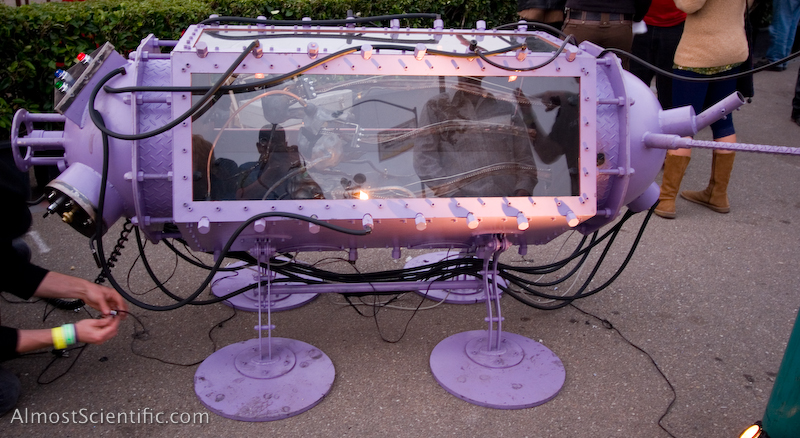
The Neuron Chamber Fabracation Photos -- June 2008

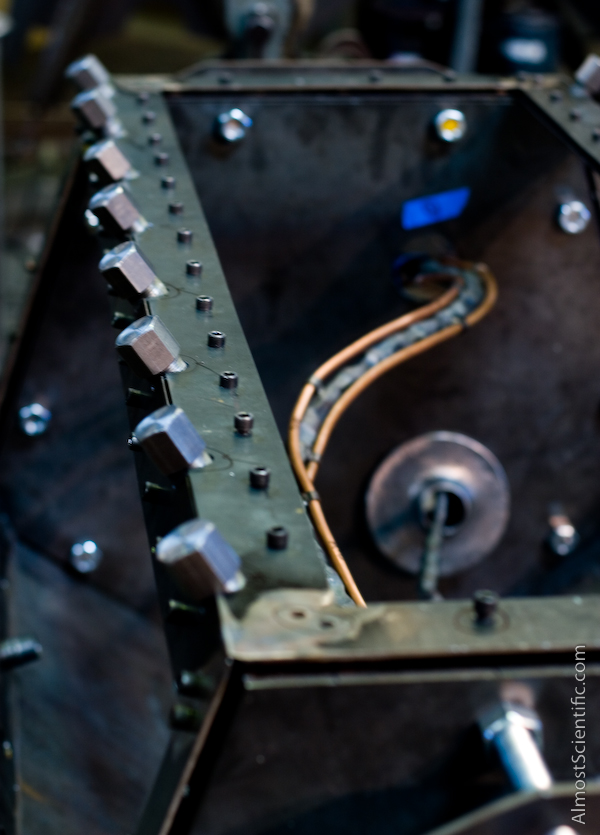
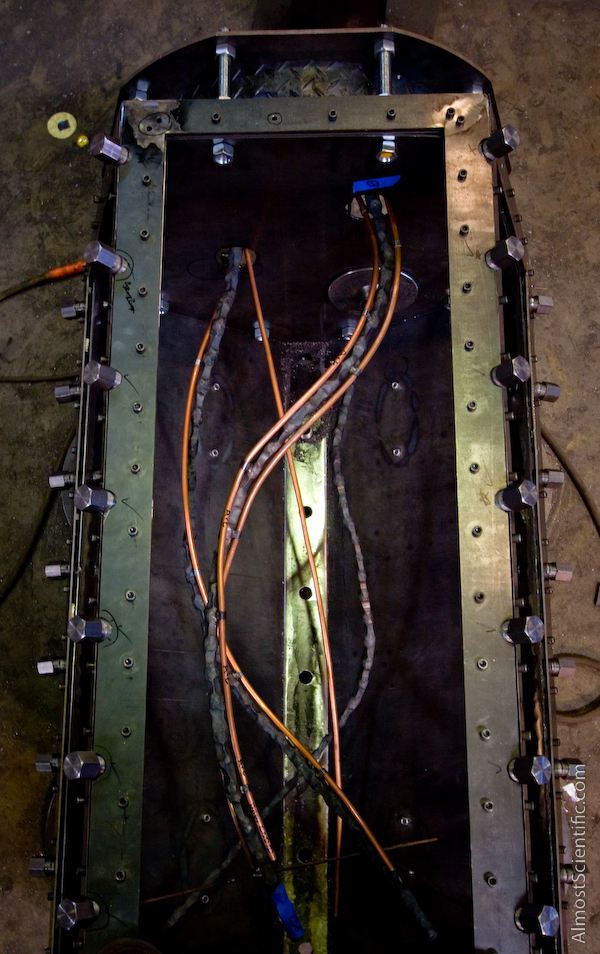
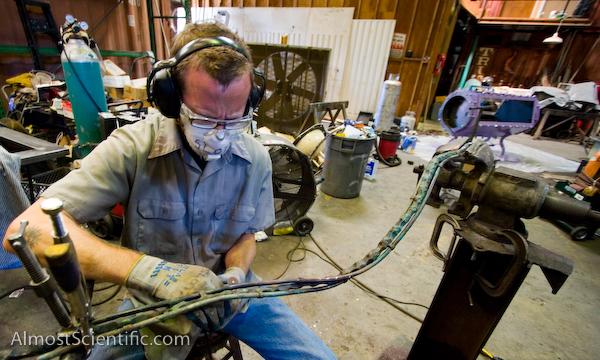



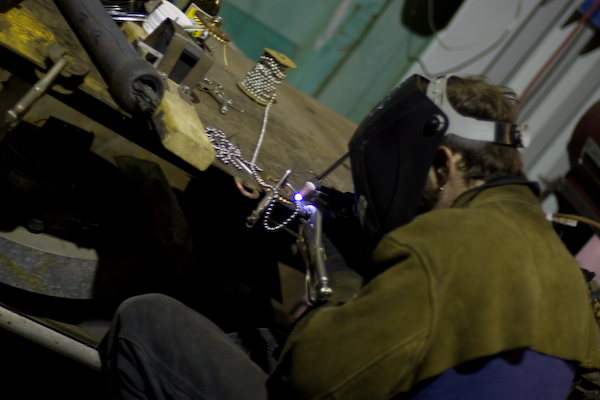

Alan, Ben, Jo and David are long time artistic colabrators, friends and part of in a vibrant and colabrative arts comunity, focusing on interactivity and kinetics, working out of West Oakland and San Francisco, California.
Alan Rorie is a artist and an advanced graduate student at Stanford University, due to complete his Ph.D. in Neurobiology in November, 2008. Focusing on the intersection between science, art and education, Alan’s work communicates the intuitions that underly scientific facts. His individual and collaborative works have been shown at events as diverse as Maker Faire, Coachella Music Festival, the Crucible’s Fire Arts Festival, the Edwardian Ball and Burning Man. His art has been featured in the science journal Nature, the technology and culture publication Wired and a wide array of blogs and web-pages. His scientific work has been published in Science and The Journal of Cognitive Neuroscience. In 2000 he was the recipient of a prestigious Howard Hughes Medical Institute pre-doctoral fellowship.
Benjamin Carpenter grew up in New England building cardboard forts and other contraptions with tools smuggled from his grandfather’s garage. Now he spends most of his time metalsmithing and pursuing his other creative interests. Earning a B.F.A. from the Maine College of Art in jewelry led him to explore the possibilities of larger scale metalwork and sculpture. He gained experience working for, and with, several artists and craftspeople on both coasts of the United States. He now lives in San Francisco where he exhibits his work nationally, runs Backbone Metals and completes work towards an M.F.A.
Jo Slota is a professional enabler. He has been helping people manifest their shop-related ambitions as a full-time occupation since 1996. With a Master of Fine Arts degree in sculpture, his pursuits have taken root in several private, small-scale, custom fabrication shops as well as in multiple non-profit community-based arts institutions. Jo is a fabricator, educator and studio manager. He currently works for California College of the Arts as their San Francisco Studios Supervisor and spends his 'own time' collaborating with close friends on projects such as the Neuron Chamber.
David Shulman grew up amid the industrial landscape of a midwestern auto town. Seeking escape, he spent years as an agent and outfitter of natural history and wilderness expeditions, during which he marveled at the physical and artistic ingenuity of people throughout the world. These diverse influences came together over the last 6 years as a fabricator, electrician and financial finagler on a variety projects large and small.
With fantastic help from: Don Hayler, CTP, Ryon Gesink,J9, Sean Orlando and many others
Alan Rorie: alan AT AlmostScientific.com